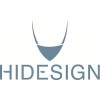Filter interviews by
Himalaya Opticals Interview Questions and Answers
Himalaya Opticals Interview Experiences
22 interviews found
I appeared for an interview in May 2025, where I was asked the following questions.
- Q1. Contact lenses , dominant eye
- Q2. About refraction
- Q3. About contact lenses
- Q4. Dominant eye why important in contact lens
- Q5. Types of refraction
I appeared for an interview in May 2025, where I was asked the following questions.
- Q1. What is your total in retail experience ?
- Ans.
I have over 8 years of retail experience, managing teams and driving sales in various store environments.
Started as a sales associate, quickly promoted to team lead within 2 years due to strong performance.
Managed a team of 15 employees in a high-volume store, achieving a 20% increase in sales over one year.
Implemented new inventory management systems that reduced stock discrepancies by 30%.
Trained and mentored new hir...
- Q2. What is your current salary?
- Ans.
My current salary is competitive and reflects my experience and contributions in retail management.
I currently earn $60,000 annually, which is in line with industry standards for a Store Manager in my region.
In my previous role, I successfully increased sales by 20%, which contributed to my salary growth.
I also receive performance bonuses based on store profitability, which can add an additional $5,000 to my annual inc...
Interview Preparation Tips
I appeared for an interview in Apr 2025, where I was asked the following questions.
- Q1. What is Dominant eye ?
- Q2. What is Contact lens
I applied via Referral and was interviewed in Aug 2024. There was 1 interview round.
(2 Questions)
- Q1. Introduce yourself
- Q2. What’s about your experience in Himalaya Optical?
- Ans.
I have 5 years of experience working as a Sales Executive at Himalaya Optical.
Managed key accounts and increased sales by 20% in the first year
Developed and implemented sales strategies to target new markets
Provided excellent customer service and built strong relationships with clients
Interview Preparation Tips
I applied via Naukri.com and was interviewed in Jun 2024. There was 1 interview round.
(1 Question)
- Q1. Hr was not interested in interviewing
Interview Preparation Tips
I appeared for an interview in Dec 2024, where I was asked the following questions.
- Q1. DUOCHORME TEST,JCC,STENOPIC SLIT ,BINOCULAR BALANCING,CONTACT LENSES
- Q2. SALES COMICATION RELATED
Interview Preparation Tips
I applied via Referral and was interviewed in Aug 2024. There was 1 interview round.
(2 Questions)
- Q1. Introduce yourself
- Q2. Share your work experience
- Ans.
I have over 5 years of experience in sales, with a proven track record of exceeding targets and building strong client relationships.
Managed a portfolio of key accounts, consistently meeting and exceeding sales targets
Developed and implemented strategic sales plans to drive business growth
Built and maintained strong relationships with clients, resulting in repeat business and referrals
Utilized CRM systems to track sale...
Interview Preparation Tips
(2 Questions)
- Q1. Technical questions about your past work experience
- Q2. Technical questions about your working knowledge
I applied via Referral and was interviewed in Sep 2023. There were 2 interview rounds.
(1 Question)
- Q1. Family details, and some friendly personal chat.
(2 Questions)
- Q1. Steps of subjective refraction
- Q2. Ocular Dominancy
Interview Preparation Tips
I applied via Indeed and was interviewed before Feb 2023. There was 1 interview round.
(3 Questions)
- Q1. Is Optometrists is a clinician or a solution provider? And why?
- Q2. What is over-refraction?
- Q3. When you can't prescribe contact lens?
Interview Preparation Tips
Top trending discussions






Himalaya Opticals Interview FAQs
The duration of Himalaya Opticals interview process can vary, but typically it takes about less than 2 weeks to complete.
Tell us how to improve this page.
Himalaya Opticals Interviews By Designations
- Himalaya Opticals Optometrist Interview Questions
- Himalaya Opticals Sales Executive Interview Questions
- Himalaya Opticals Store Manager Interview Questions
- Himalaya Opticals Store Manager cum Optometrist Interview Questions
- Himalaya Opticals Retail Store Manager Interview Questions
- Himalaya Opticals Analyst Interview Questions
- Himalaya Opticals Consultant Optometrist Interview Questions
- Himalaya Opticals Accounts & Finance Executive Interview Questions
- Show more
Interview Questions for Popular Designations
Overall Interview Experience Rating
based on 21 interview experiences
Difficulty level
Duration
Interview Questions from Similar Companies
Himalaya Opticals Reviews and Ratings
based on 226 reviews
Rating in categories
|
Optometrist
80
salaries
| ₹2.5 L/yr - ₹4.5 L/yr |
|
Store Manager
64
salaries
| ₹2.5 L/yr - ₹5 L/yr |
|
Sales Executive
49
salaries
| ₹1.7 L/yr - ₹3.6 L/yr |
|
Retail Store Manager
30
salaries
| ₹2.2 L/yr - ₹5 L/yr |
|
Consultant Optometrist
24
salaries
| ₹2.4 L/yr - ₹4.1 L/yr |

Joyalukkas

Unicorn Infosolutions

Forest Essentials

Hidesign
- Home >
- Interviews >
- Himalaya Opticals Interview Questions













